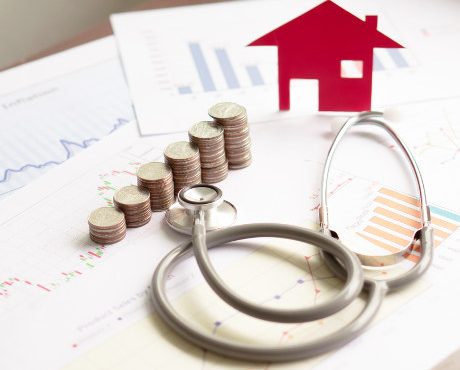Collect a Growing Dividend Yield of 9.3%
In today’s market, the blunt reality is that high yield stocks don’t offer much in terms of growth potential. This means investors have to choose whether they want a high current payout, or high growth potential.
And that’s why Sabra Health Care REIT, Inc. (NASDAQ:SBRA) is special. The company not only pays generous dividends today, but is growing its payout at an impressive pace.
As the name suggests, Sabra is a real estate investment trust (REIT) with a focus on the health care sector. The company was created as a spin off from Sun Healthcare Group Inc in November of 2010. Since then, Sabra has expanded its portfolio quite a bit through a series of acquisitions.
Headquartered in Irvine, California, the company’s portfolio currently consists of investments in 530 properties, including skilled nursing/transitional care facilities, senior housing communities, and specialty hospitals. They are diversified across 73 different regional and local health care providers. (Source: “REITWorld: NAREIT’s Annual Convention,” Sabra Health Care REIT, Inc., last accessed December 1, 2017.)
At the same time, the company also invests in mortgage loans, construction loans, and preferred equity.
Thanks to rental income and interest payments from its investment portfolio, Sabra Health Care REIT can generate stable cash flows and pass some of that cash to shareholders in the form of dividends.
Also Read:
Dividend Investing: 3 Healthcare Stocks Yielding Up to 9.4%
Right now, the company pays quarterly dividends of $0.45 per share, giving SBRA stock an annual yield of 9.3%.
The payout has been growing, too. Consider this: in 2011, Sabra declared and paid total dividends of $0.96 per share. This year, the company is on track to pay total dividends of $1.73 per share. That’s an increase of 80.2%.
SBRA Stock Dividend History
(Source: “Dividend Information,” Sabra Health Care REIT, Inc., last accessed December 1, 2017.)
Going forward, there is a powerful demographic trend that could become a catalyst for SBRA stock: population aging. Between 2020 and 2030, the number of Americans aged 65 and older is projected to increase by 18 million. (Source: “Aging in the United States,” Population Reference Bureau, last accessed December 1, 2017.)
As more people enter their golden years, the demand for health care services and long term care facilities will likely increase. With a large and well-diversified health care real estate portfolio, Sabra stands to benefit from this demographic tailwind.
In fact, business has already started to show significant improvements. Sabra reported earnings last month. In the third quarter of 2017, the company generated normalized funds from operations (FFO) of $0.63 per share, representing a 16.7% increase year-over-year. (Source: “Sabra Reports Third Quarter 2017 Results and Improved Balance Sheet With Leverage Lowered to 4.79x; Increases Quarterly Common Stock Dividend by 5%; Reports Smooth Integration of CCP and Subsequent Investments; Reaffirms 2017 and 2018 Guidance,” Sabra Health Care REIT, Inc., November 1, 2017.)
Like most REITs, Sabra borrows money to finance its investments. The good news is, the company has an investment grade balance sheet and a well-laddered maturity schedule. Moreover, most of the borrowings are fixed rate debt, so when interest rate rises, the increase in the company’s debt repayment burden will likely be limited.
Sabra also has plenty of liquidity. As of September 30th, 2017, the company has unrestricted cash and cash equivalents of $30.6 million. On top of that, its revolving credit facility can provide borrowings of up to $749.0 million. That adds up to $779.6 million of total liquidity.
With a growing business, solid financials, and a generous dividend policy, Sabra Health Care REIT is well-positioned to deliver rising dividends for years to come.
